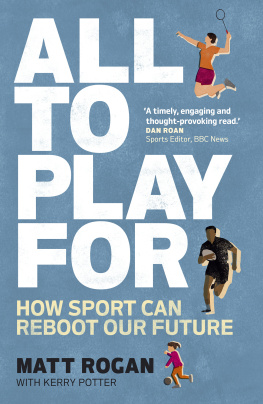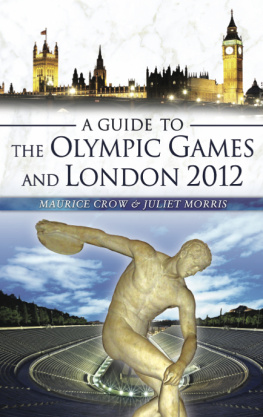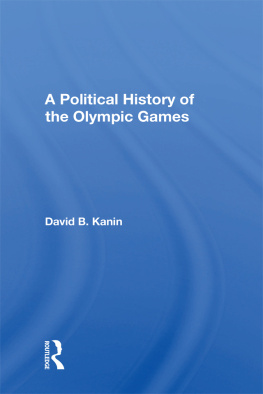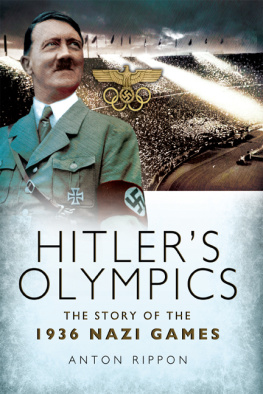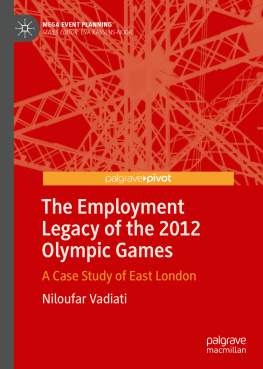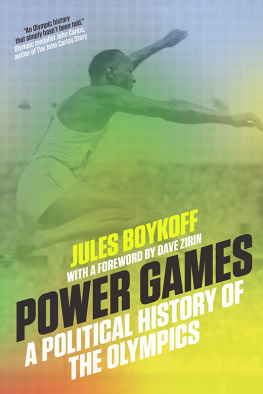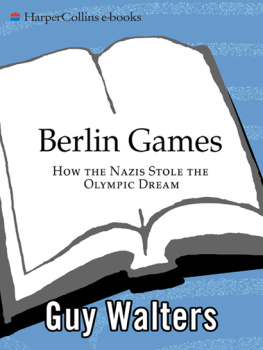An Historic Undertaking
I cannot bring my Muse to dropp Vies
Twixt Cotswold, and the Olimpicke exercise
Ben Jonson
Sport in Britain has always been about far more than what actually happens on the field of play. The story of the relationship between the sporting and social fabric of life in Britain is one of gradual progress but constant tension. From the very start, sport was used as a means of preserving political power, the social status quo and even norms of morality. There are cameo roles in this journey for gambling, the role of the Church and even alcoholic drink, all as omnipresent in the backdrop to sporting competition hundreds and even thousands of years ago as they are today.
We start our journey in a cave, some 30,000 years ago. Paintings known to have adorned the walls of dwellings in this era offer some indication of the role of exercise and sport at this time with depictions of animals being hunted for food but also for sporting enjoyment. There are paintings of the hunting of woolly rhinoceros, which would certainly have been hunted for sport rather than sustenance. As society gradually became more sophisticated, demonstrating personal power and superiority over ones acquaintances through the sport of hunting rather than mortal combat was seen as a more progressive means of establishing rank. Right from the beginning of our journey as a civilisation, sport has helped society to develop its unwritten rules and afforded those who compete a sense of prestige, profile and, lets not forget, pure enjoyment.
Sporting festivals, too, come to the fore very early in our journey. Both Tim Harris in Sport and Melvyn Watman in The History of British Athletics identify the most ancient of these to have been the Tailteann Games, which are believed to have been started in 632 BC, although some put its origins as far back as 1829 BC. These were effectively an Olympic Games of the age, staged in County Meath in Ireland every three years. The Games were held on the Feast of Lughnasa, now traditionally the first day of August. Contests in horse and chariot racing were held, as well as swimming, spear throwing, running, vaulting, high-jumping, putting the stone and throwing the wheel. There was even a team game broadly equating to what we know today as the Irish sport of Hurling. A legendary hero of these Games was a character named Setanta, a name familiar to many of us today as the adopted brand name of the Irish Pay TV sports channel.
These Games continued until the Norman invasions brought them to a halt in 1168, some 2-3,000 years after their inception, a period which puts the longevity of the modern Olympic movement into perspective. While there is no evidence to confirm that sporting festivals of this kind extended from Ireland to Britain during this period any more successfully than Setanta did a few years ago, it is certain that less active games were enjoyed in Britain at the time. Druid graves discovered near Colchester suggest board games were a common feature of Celtic times. Discovered neatly organised in these Colchester graves, beneath the bodily remains, was a board game with glass counters laid out ready to play, as well as some sort of herbal brew, perhaps enjoyed at the same time!
Brief Roman governance left Britain a language in Latin and a religion in Christianity. Latin was never a common tongue with which to bond the people, but rather a means of defining an elite social class through its usage. Anglo-Saxon times saw the nation geographically divided into separate kingdoms. These regions shared a common language and similar customs but were divided under many different kings. Succession to the kingdom depended on the amount of support that could be bought in influential circles. Gifting land, treasure and slaves was generally the way to retain popularity, and winning battles the route to securing a plentiful supply of this currency. Given this context, it is unsurprising that fighting was the critical physical pursuit of the age. Sport and pastimes such as horse racing and hunting were derivative of the fight. Dice and board games, such as a form of chess, were also prevalent.
Once in situ, kings aimed to outlaw anything which had the potential of causing uprising against their rule. The Church was often their principal means of doing so, and it was heavily involved in the regulation of sport. Sport for the masses was often perceived as threatening to the status quo, and was heavily controlled.
As Ireland had already demonstrated through the popularity of the Tailteann Games, there was certainly early evidence that sport could have a broader entertainment as well as participation value. Between 1120 and 1300 the era of knights on horseback arrived and with them the early stages of commercialised sport. The original tournaments were not the classic Hollywood joust, but rather freeform scraps that gained rules as they went along. By 1200 a typical tournament lasted two days, with an initial day of jousting and skirmishing followed by the charge and breaking of lances, before the competing armies broke up into a melee. A good fight between roughly equal sides was in everyones interests, for an unequal battle would discourage defeated knights from competing again and mean less booty for the victors. This worry is echoed in some quarters today as unease grows that audiences may dwindle, as an elite group of rich clubs in footballs Premier League become increasingly dominant.
The experience on tournament day itself also invited comparison with a Premier League match day. Tournaments of this type were the defining spectator sport of the age, with audience chants, team colours and big salaries for the knights themselves. Although all sorts of foul play seemed standard practice, common sense usually prevailed. Tricks of the trade included such strategies as cost cutting (reducing ransom price in the field, or even releasing a captured knight to earn his ransom in the field fighting for you) and agreeing profit sharing from the competition in advance of the action unfolding. In many ways these tricks are very similar to the kinds of activities which remain commonplace in professional cycling. Prizes for performances were also given. There is also record of English Knight William the Marshall being awarded one after the days events had concluded. Tim Harriss Sport suggests William was unable to pick up his prize in person as he was with his blacksmith having his battered pot helm removed from his head.
Although these events were usually on a smaller scale in Britain than in France, they were a welcome diversion and source of income for the locals. However, their increasing popularity meant that they risked sparking local riots and the resultant extensive destruction. Navigating this tension continued to be challenging and in 1194 Richard the Lionheart reorganised jousting and set up five licensed sites. Much like Formula One teams today, tournament teams were funded for the prestige they brought their benefactors. As well as wages and prizes, expensive transfer fees were paid for star performers. When William the Marshall moved to the team of Phillip of Flanders, he was transferred in exchange for one quarter of the rents of the port of St Omer.
Following Richards death, the main competition sites were one near Dunstable and another at Hounslow Heath, now Heathrow Airport. It is strange to think that most of the international sporting elite will arrive in Britain for London 2012 by landing on one of the countrys very first commercial sporting sites!
Jousting continued to evolve, with a wooden enclosure soon used to define the area of competition. In many cases the contest was used to decide justice as opposed to a more regular form of earthly judge. Both Smithfield and Cheapside in London became centres for these events. Much of the sporting participation of this time in London is captured in the


